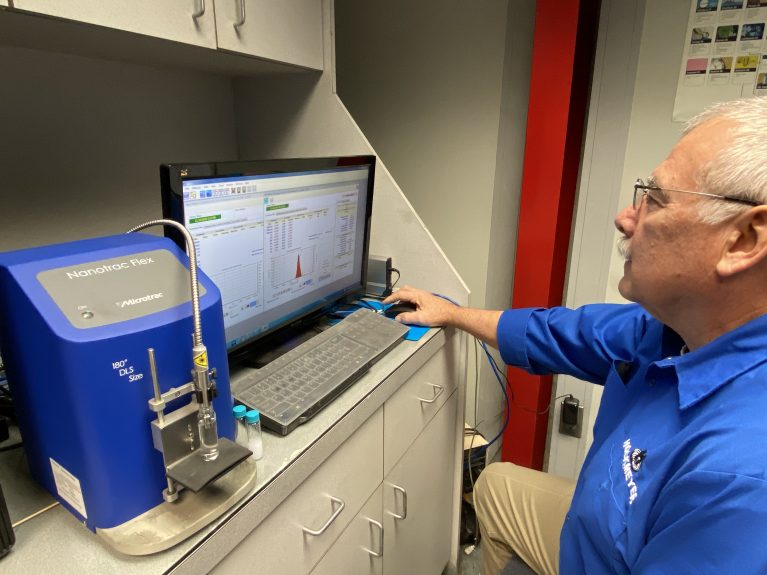
Industry Information
Improving the Particle Size Reduction in Agricultural Chemicals
Agricultural chemicals (commonly known as agrochemicals) play a vital role in crop protection and pest resistance management, and are essential to the success of the agricultural industry today. Still, the manufacturers that create these important chemicals are faced with their own set of unique challenges when working to streamline the particle size reduction process. How does this process play a role in the effectiveness of agricultural chemicals, and how can it be improved, both for the sake of farmers and manufacturers?
Why Are Agricultural Chemicals Important for Food Production?
Agrochemicals are pivotal for food production and contribute to the agricultural industry since they assist with crop protection and pest resistance management, countering the continually evolving challenges posed by various pests that threaten crops. Farmers can ensure healthier plant growth and mitigate economic losses by utilizing pesticides and fungicides as part of Integrated Pest Management (IPM) strategies that combine agricultural chemicals and other management methods to manage and delay pest infestations, promoting sustainable practices effectively.
Agricultural chemicals also enhance food production and quality, addressing the escalating global food demand by enabling farmers to extract higher yields from limited land and minimizing food shortages. These chemicals contribute to better crop quality as well by controlling pests and diseases and maximizing attributes like size, color, taste, and nutritional value. Finally, agrochemicals allow for efficient management of larger land areas, reducing manual labor needs and resource expenditure. Although environmental concerns do exist, a variety of chemicals prevent invasive species and are designed to be more eco-friendly. When applied carefully, these chemicals support conservation efforts and bolster agricultural productivity, contributing to economic stability and development through reliable crop protection and increased yields.
Why Is Particle Size Reduction Important for Agricultural Chemicals?
Utilizing smaller particle sizes in agrochemicals offers a range of benefits that enhance their overall effectiveness and minimize their environmental impact. These advantages stem from the increased surface area of active ingredients, allowing for better contact with target pests, pathogens, or plants. This improved contact potential translates into a heightened ability to control pests and diseases, contributing to more successful outcomes in crop protection. Reducing particle size also leads to improved dispersion and suspension of the active ingredients in liquid formulations. This is pivotal in preventing particle agglomeration and settling, ensuring a uniform chemical distribution when sprayed. The result is a more efficient and thorough coverage of the target areas, maximizing the chemicals’ impact while reducing waste and uneven application.
Additionally, smaller particles are more bioavailable and are absorbed more easily by plants or organisms, allowing for potentially reduced required dosages while still achieving the desired results. Applying agricultural chemicals in lower quantities not only enhances safety but also minimizes the risk of over-application, reducing the chances of potential environmental contamination and harmful effects on non-target species. Through an optimized particle size reduction process, smaller particle sizes also contribute to optimal spray characteristics, ensuring comprehensive coverage and penetration into target areas with fine droplets. This mist of particles maximizes the chemical’s reach and effectiveness, and uniform particle size distribution ensures consistent dosing and application, allowing for standardized results across different batches and applications.
Particle Size Reduction Solutions From Hockmeyer Equipment Corporation
Agrochemicals are continuously evolving and improving thanks to several revolutionary steps in agriculture and food that make particle size reduction easier and more effective, including nanotechnology and air control in production. Nanotechnology enhances plants’ ability to absorb nutrients, detect disease, and control pests, and preventing air entrainment through control in production is crucial to avoid foaming issues. Air bubbles trapped in water can lead to wetting agents moving away from the active ingredient, causing demixing and aggregation that can clog equipment or stick to surfaces. When mixing flowable or suspension concentrates into emulsifiable concentrates, it is essential to watch for heterogeneous flocculation and combat it with the appropriate dispersion method.
Cutting-edge developments in milling agrochemicals can be implemented through several state-of-the-art Hockmeyer machines designed to streamline the particle size reduction process for you, including the innovative Micro Mill, NexGen™ Micro Mill, and NexGen™ Vacuum Recirculation Mill, and the HCP Immersion Mill, which employs nanotechnology through the HCPN model. If you’re interested in learning more about how these mills can improve your processes, the Hockmeyer Customer Service Laboratory offers free initial testing to show you exactly how our equipment will increase your products’ quality and increase your efficiency.
Optimize Your Particle Size Reduction Process With the Help of the Hockmeyer Team
No matter what your specific needs are, our wide variety of solutions can help you achieve the results you’re looking for with your agrochemicals. If you’re interested in learning more about the particle size reduction solutions we offer here at Hockmeyer, we’re ready to help, and we look forward to hearing from you.
We offer testing through our customer testing and applications lab to assist you in choosing the right equipment for your agrochemical formulations and extended field training and support to ensure your equipment is running at peak efficiency.
Contact us for more information about our products and learn how they can best serve you and your business needs. Our knowledgeable team is ready to assist you as you work to streamline your company’s particle size reduction processes.

